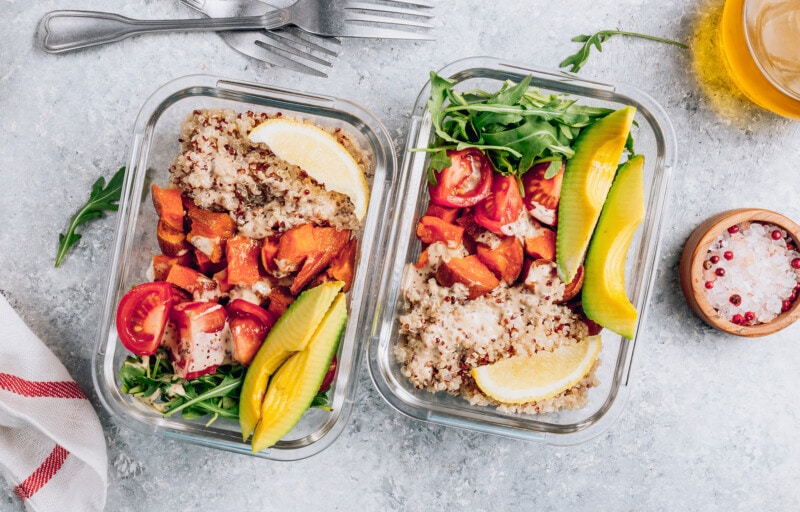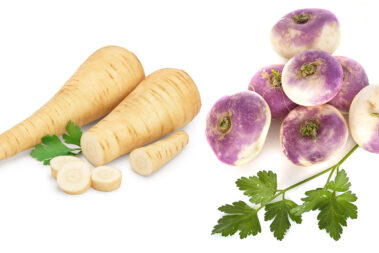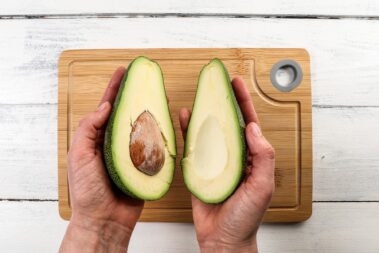As it turns out, eating vegan is not as expensive as eating a traditional meat and dairy-containing diet. But only so long as the diet focuses on whole foods and not processed commercial vegan alternatives.
In this article, we’ll look at the average cost of going vegan, compare vegan and non-vegan food prices, and look at some hacks for saving money while following an animal-friendly diet.
Table of Contents
What Is a Vegan Diet?
Being a vegan means following a diet that contains no animal products. This definition extends to obvious foods like meat and fish. It also includes less obvious products such as dairy, eggs, and even honey.
In fact, die-hard vegans also avoid white sugar, wine, and other surprisingly non-vegan foods that typically require animal products for processing.
Many vegans focus on consuming whole foods like grains, beans, and produce. But just as many eat a more processed diet that includes fake cheeses, meat substitutes, and commercial products marketed specifically to vegans and vegetarians.
Benefits of a Vegan Diet
The vegan diet offers many benefits.
The most obvious benefit is for the animals. By avoiding animal-based products, vegans save countless animals from slaughter and abuse every year. These lives saved include the calves and chicks that would be culled in the dairy and egg industries.
Studies have shown that eating a plant-based diet also has immense benefits for a person’s own health. A vegan diet can help you lose weight while reducing your risk for heart disease and certain cancers. This is especially true for those that follow a whole-food, plant-based diet that is low in processed foods and oil.
By avoiding meat and animal products, consumers can have a profound impact on climate change and wildlife ecology. Animal agriculture is responsible for more greenhouse gas emissions than the entire transportation sector combined(1). It’s also the leading cause of species extinction and habitat destruction(2).
More recently, studies have shown that going vegan can help save your bank account, as well. For one, people following a vegan diet spend less on healthcare costs due to the health-supporting features of the lifestyle. And, according to research carried out by Kantar, vegans spend 40% less on groceries than meat eaters.
But how much money you will save—or not—going vegan depends largely on your food preferences.
The Average Cost of Going Vegan
Many foods that make the basis of a healthy vegan diet are the same inexpensive staples that create the base of the average American diet. These include foods like pasta, rice, beans, and bread.
According to the Kantar Study, the average home-prepared, meat-containing meal costs about $1.91 per plate. Meanwhile, the average vegan meal costs about $1.14.
But your preferences in what goes into your meals are what determine if you will save money or lose money by becoming a vegan.
Whole-Food, Plant-Based
Whole-food vegan diets use simple ingredients to build on the standard meal base. Fruits, vegetables, soy, seeds, and nuts are used in various combinations to create delicious dishes. With a few exceptions, such as avocado and macadamia nuts, most of these foods tend to be less expensive per serving than meat and dairy.
Buying items in their most basic form and in bulk amounts can save even more money. A frugal vegan cooking with dried grains, dried legumes, and in-season produce, could easily spend far less than the nationwide average on groceries each month.
Processed Vegan Alternatives
Vegan diets become more costly when you begin including commercial processed meat and dairy alternatives. These foods are typically made by combining processed or lab-engineered ingredients to create a product that looks and tastes like a specific animal product.
This type of vegetarian and vegan fare has become incredibly popular of late. And many options offer very convincing alternatives for those who like the taste of meat and dairy but want to avoid animal products.
While these food items can bring some of the same benefits as traditional vegan foods, they typically lack the simple price tag. In fact, most processed vegan products cost more than the meat, dairy, and egg products they’re meant to replicate.
Price Comparison of Non-Vegan and Vegan Foods
In order to get an accurate picture of if it’s cheaper to go vegan, you must compare prices of both processed and unprocessed animal-free products.
Below, we’ve compared some of the most common animal food products with their associated commercial vegan alternative and common whole-food vegan substitutes.
*Prices listed are averages for the US market.
| Food Type | Animal Sourced | Processed Vegan Alternative | Whole-Food Vegan Alternative |
| Meat | Beef – $4 to $20 per pound Pork – $4 to $7 per pound Chicken – $1.50 to $5 per pound | Impossible Burger – $9 per pound Beyond Meat Sausages – $11 per pound Quorn Chicken Nuggets – $8.50 per pound | Dried Beans – $1.50 per pound Canned Beans – $1.10 per 15 oz Tofu – $2.50 per pound Tempeh – $5 per pound |
| Fish | Salmon – $8 per pound Tuna (canned) – $3.15 per 8 oz | Gardein F’sh Filets – $7.60 per pound Good Catch Fish-Free Tuna – $15.30 per 8 oz | Seaweed – $5 per 2 oz Tofu – $2.50 per pound Mushrooms – $3 for 8 oz |
| Dairy | Milk – $4.40 per gallon Cheese – $5.90 per pound Yogurt – $1.50 per 8 oz | Commercial Almond Milk – $4 per 64 oz Vegan Cheese Alternative – $4.50 per 8 oz Non-Dairy Yogurt – $4.20 per 8 oz | Almonds – $2.20 per 1 ½ cups (makes 64 oz almond milk) Nutritional Yeast – $3.75 per 4 oz |
| Eggs | Eggs – $3.59 per dozen | Just Egg Replacer – $4.50 per 12 oz | Ground Flaxseed – $1.40 per 3.6 oz (makes 12 vegan eggs) |
As you can see, in almost all cases, commercial vegan alternatives are more expensive than the animal product they’re meant to replace. This makes sense given how new and how niche many of these products are.
Whole-food alternatives, on the other hand, tend to be far cheaper than processed alternatives and cheaper than the animal product they’re used in place of. Additionally, many vegan whole-food products are more shelf-stable than their animal alternatives.
Not only does this mean they’re less likely to go bad and be wasted, but they can also be purchased in bulk. This allows for further savings.
Vegan Meal Costs
As we covered above, vegan meals cost on average 40% less than meat or dairy-containing meals. However, you can easily manipulate this number further by building meals off cheap staples that are available in bulk.
A meal of rice, legumes, and seasonal veggies averages less than $0.70 per person. And it offers the same amount of calories and protein as a plate of rice, chicken, and vegetables, which averages over $1.50 per plate.
Of course, if you prefer to lighten your cooking load or want your food to taste the same as it did before you switched to a vegan diet, you’ll have to pay a little more. But that doesn’t mean you have to fork over the cash for commercially processed alternatives. There are many great-tasting, easy-to-make vegan recipes you can create right at home using budget-friendly ingredients.
Your Cheap Vegan Grocery List
If you’ve recently switched to a vegan diet, there are some things you’ll want to make sure you have on hand. All of these staples are inexpensive and shelf-stable to help you save money while expanding your affordable meal options.
- Rice
- Dried Beans and Lentils
- Dried Pasta
- Nuts
- Oats
- Quinoa
- Flaxseed
- Dates
- Vegetable Stock
- Vinegar
- Oil
- Agar Agar
- Nutritional Yeast
These vegan pantry staples are perfect for building a base for any vegan meal. By adding frozen or in-season produce, you can create a healthy, delicious, and inexpensive meal the whole family will love.
FAQ
How much does it cost to be a vegan?
This varies by person, but on average, being vegan is cheaper than eating meat. The average vegan meal costs about $1.14, according to the Kantar Study. This is about $0.75 cheaper than the average meat-containing meal.
Why is being vegan so expensive?
Actually, being vegan is not very expensive. The exception to this is if you eat a lot of processed vegan foods, like fake meat. These items tend to be more expensive than real meat because they take more ingredients to make and because meat is highly subsidized so it costs less by the time it hits the consumer.
How can I spend less as a vegan?
It’s easy to save money as a vegan by buying whole foods in bulk. The cheapest items are beans and grains. You can also save money by growing your own veggies, even without a garden!
Money-Saving Recipe Ideas
The above items are a good start for your new vegan lifestyle, but they don’t cover everything you’ll need. Below are some of our favorite recipes for vegan condiments, sauces, and other staples. By making these at home, you can save loads of cash.
- Homemade Vegan Ketchup
- Easy Homemade Vegan Croutons
- Homemade Vegan Barbecue Sauce
- Homemade Vegan Powdered Sugar
- Vegan Worcestershire Sauce Substitute
- Vegan Ranch Dressing
Once you have your basics covered, you’re ready to start cooking up some fantastically simple and affordable recipes. Here are some of our favorite homemade vegan meals that prove being cruelty-free can be delicious and cost-effective.
- Crispy Teriyaki Tofu Bowl
- Zesty Black Bean and Tomato Quinoa
- Vegan Buffalo Wings
- Roasted Brussels Sprout Salad
- Vegan Egg Salad
- Vegan Grilled Cheese
- Mexican Street Corn Burgers
- Vegan Quinoa Salad with Lemon
Loving these money-saving tips? Sign up for our newsletter and get more great vegan tips and recipes sent straight to your inbox.
Go Vegan, Save Money
As it turns out, going vegan is not an expensive decision. In fact, if you shop intentionally, you can save a significant amount of money over traditional diets.
What are your favorite money-saving vegan tips? Let us know in the comments below.
- How to Pick the Perfect Watermelon For a Sweet Summer Treat - April 10, 2024
- Future Kind’s Foundations: A Multivitamin Made for Vegans - December 5, 2023
- Does Nutritional Yeast Go Bad? - November 28, 2023







